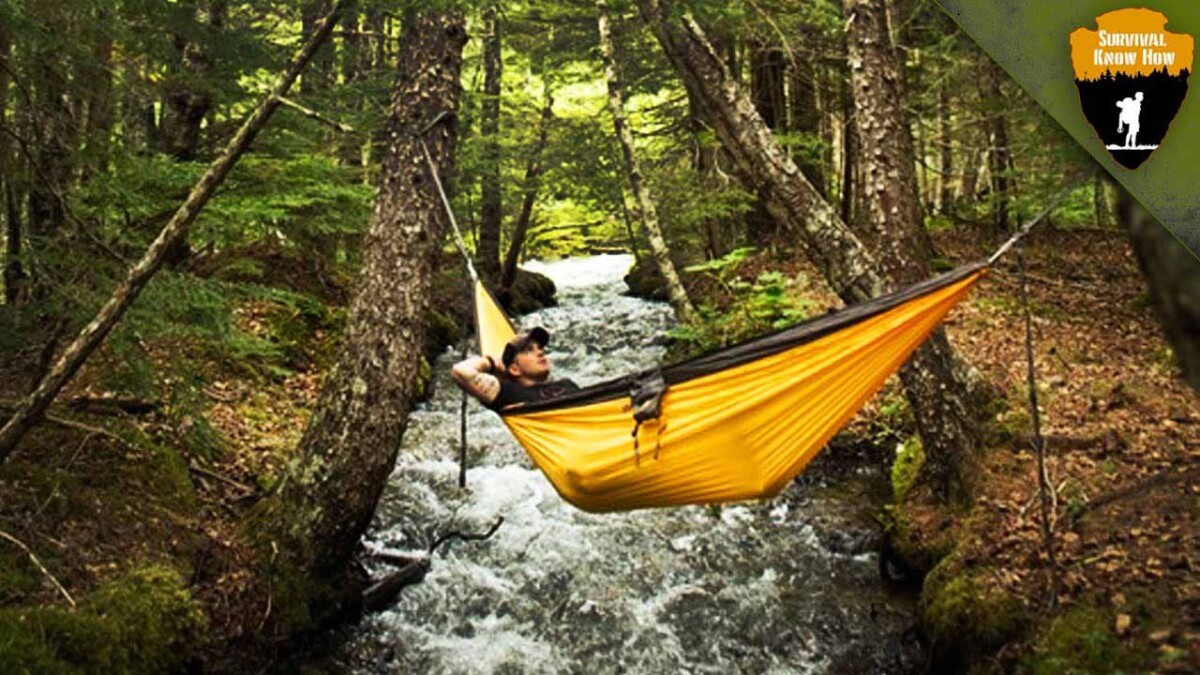Hammock camping is a fun past-time for many lovers of the outdoors. Although when you are setting up your campsite there are plenty of common mistakes many people make. Unlike the widespread idea of tent camping, hammock camping is a little less well known. So it makes sense that a majority of campers look over some of these crucial tips. Here I am going to dive into the 10 most common hammock camping mistakes that I have made myself and a few others from campers over the years, plus a few good tips on how to have a better experience with your hammock.
1 | Sleeping Like a Banana
The first mistake I commonly see is campers sleeping in their hammocks like a banana. By a banana, I mean sleeping straight up and down on the hammock or along the centerline. This is not near as comfortable as sleeping at a slight angle. That way you can distribute your weight more effectively throughout the hammock. Sleeping like a banana puts all your weight in the center of the hammock, which can make it more uncomfortable compared to the alternative. Plus sleeping at an angle also keeps the sides of the hammock from coming up around you like a cocoon.
2 | Not Using an Insulating Barrier
Another tip that will make you much more comfortable in your hammock is using an insulating barrier between you and the bottom of your hammock. Personally, I use an under-quilt, which is a quilt-like material that attaches to the ends of your hammock and hangs under it. This is basically like a sleeping bag for your hammock. There are also plenty of other options you can use, like a liner on the inside of the hammock or even a yoga pad. Use whatever you can to insulate the bottom of your hammock against the cold and wind. The more body heat you can conserve, the warmer and more comfortable you will be during your trip.
3 | Not Using Tree Straps
Another common mistake I see campers doing is not using tree straps to hang their hammocks. Compared to rope, tree straps are super convenient. They are easy to set up and even easier to attach your hammock to. Plus, rope oftentimes stretches if you are putting constant pressure on it, like when you are sleeping. With that constant pressure the rope could stretch quite a bit and your hammock will sag down by a considerable amount.
An added benefit of using tree straps is that you also protect the tree a bit better. Normal rope can tear up the bark and damage the surrounding area of that tree. Tree staps on the other hand do not move near as much, causing less friction and less (or zero) damage.
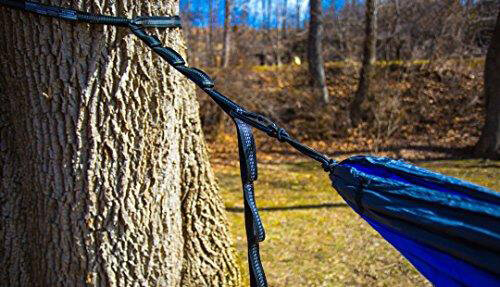
4 | Not Having a Sag in the Hammock
An important setup tip is having a sag in the hammock. When you first hang up your hammock, it is crucial that you do not tie it up too tight, or too loose. If it is too tight, laying on it will be very uncomfortable, and if it is too saggy, it will be difficult to lay in. The ideal angle to hang your hammock at is 30 degrees.
Obviously, most of us do not take a protractor with us camping, but if you make an “L” with your hand and put it under one of your hammock straps at a 90-degree angle after you hang it, you can see how to adjust it. If the strap does not touch your index finger, it is hung too tight and you should loosen it a bit. If the strap does not touch your thumb, then it is hung too loose and needs to be tightened.
5 | Setting Your Tarp up Too High
Assuming you are using a tarp to keep rain or the morning dew off, you may be placing it too high up. Placing it lower can help you stay warmer because the tarp will help trap in some of your body heat. The higher you put it the less heat it will be able to trap, but you also should not put it so low where you can not get in or out of your hammock. All and all this could add a good bit of heat to anyone’s setup and is a tip that is often overlooked.
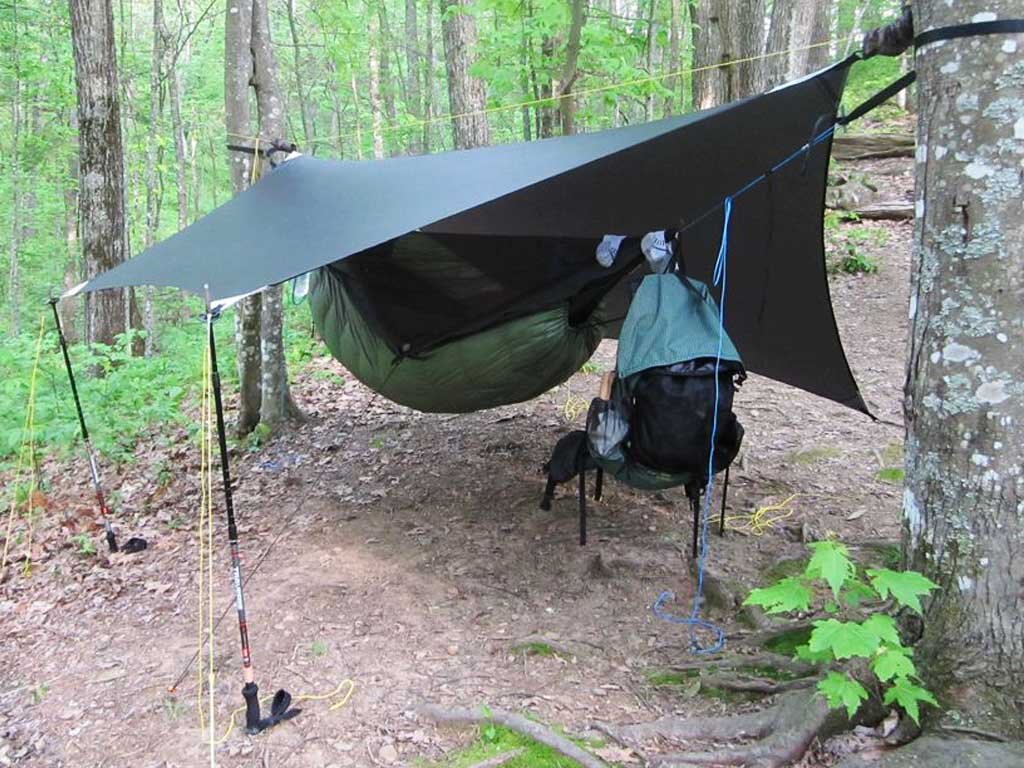
6 | Take Your Boots Off
One thing that is a pet-peeve of mine is campers jumping in their hammocks with their dirty boots on. We do not always sleep the same way in our hammocks and it could be easy to forget which way you were laying when you were wearing your boots, so then you wind up laying your head in the dirt. That’s not fun for anyone, especially with the lack of an available shower. So take your boots off before getting in your hammock, and try your best to keep your hammock clean.
7 | Keeping Critters Out of Your Boots
Since we are taking our boots off before hopping in the hammock, we need to make sure that nothing gets into them. Unlike tent camping, there is not a super safe place to put your boots where nothing can get to them. So what I do is place them under my hammock with a pair of socks stuffed in them. This keeps them dry and it also keeps spiders or other things from crawling inside them.
8 | Not Making an Air Gap With Your Under Quilt
If you do choose to use an under-quilt, you should make sure that you leave an air gap between it and your hammock. It does not have to be huge, but air is very insulating. So if you can keep an air pocket between the under-quilt and the hammock bottom you will be warmer than if you just hung it up tight under the hammock.
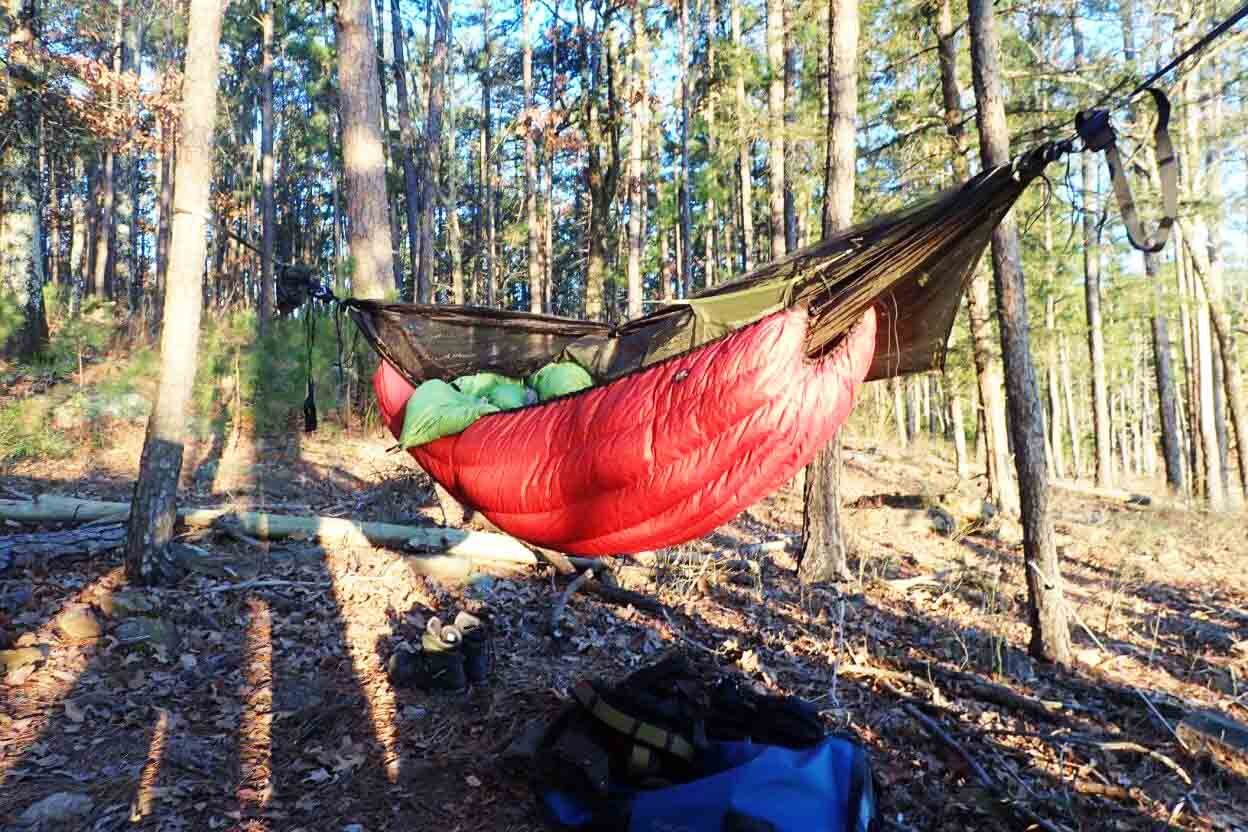
9 | Keeping Your Gear Protected
Another important thing you need to make sure you are doing is keeping your gear safe from the elements. One of the best ways to do this is to get a cover for your backpack. This way you can put all of your weather-sensitive things in your backpack and then cover it up for the night. If you have a bunch of food on you, you may also want to hang it in a tree. Although you should make sure it is not the tree you are sleeping in. The last thing you want is to be sleeping in a tree that a bear is trying to climb.
10 | Not Using a Drip Line
While campers usually put a lot of effort into keeping their setups waterproof, many times we can still get wet. One of the major ways water gets into our hammock is through the straps. Even though you have a tarp overhead, the trees are not waterproof. Water can trickle down until your straps become saturated and then eventually leak into the hammock. The best way to fix this is to tie a small piece of paracord around your straps and let it hang down. This will get saturated with the strap, but instead of the excess water dripping on you, it will drip down the paracord. You could also use a double carabiner set up and that will accomplish the same thing. So instead of hooking up to the tree strap with a single carabiner, try two next time.
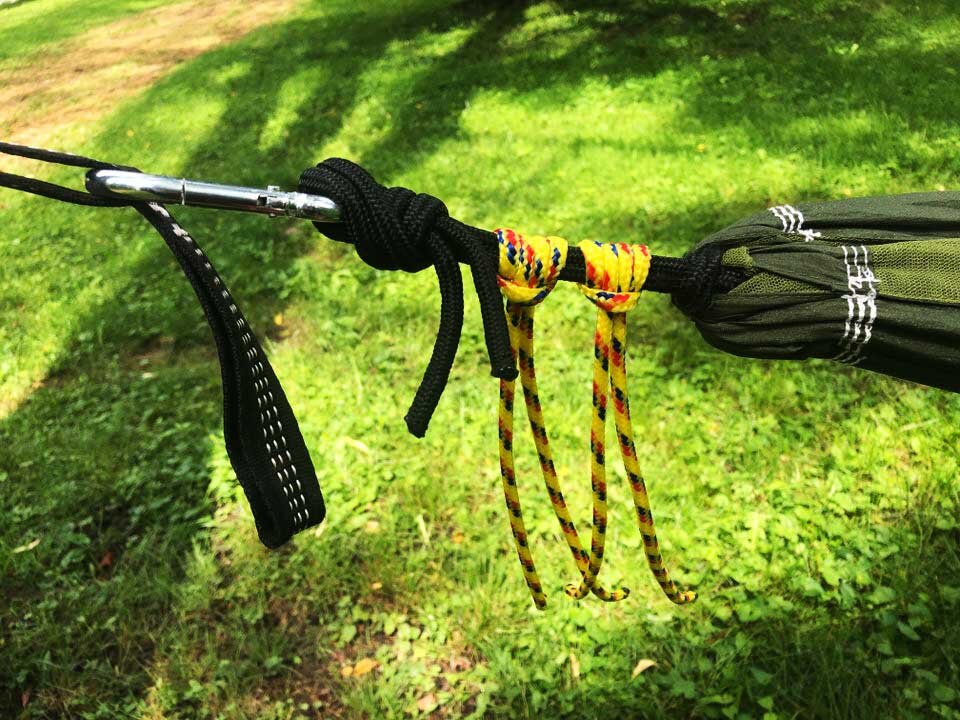
Conclusion
Hopefully, with these 10 tips, you can have a much better time hammock camping. These tips will help you be more comfortable in your hammock, keep your gear safe, stay dry, and stay warmer than you would otherwise. All 10 of these are probably not new to you but I genuinely hope that a few of them could help you out. Good luck in your next adventure outdoors!
Recent Posts
So 2020 was a rough year. We saw massive hurricanes, including one spot in the Gulf Coast that was stuck by two different hurricanes mere days from one another. We also witnessed one of the...
When many people get into prepping, they commonly focus on fantasies about the end of the world and building a bug-out bag to help prepare them. But the truth is these scenarios only come...

